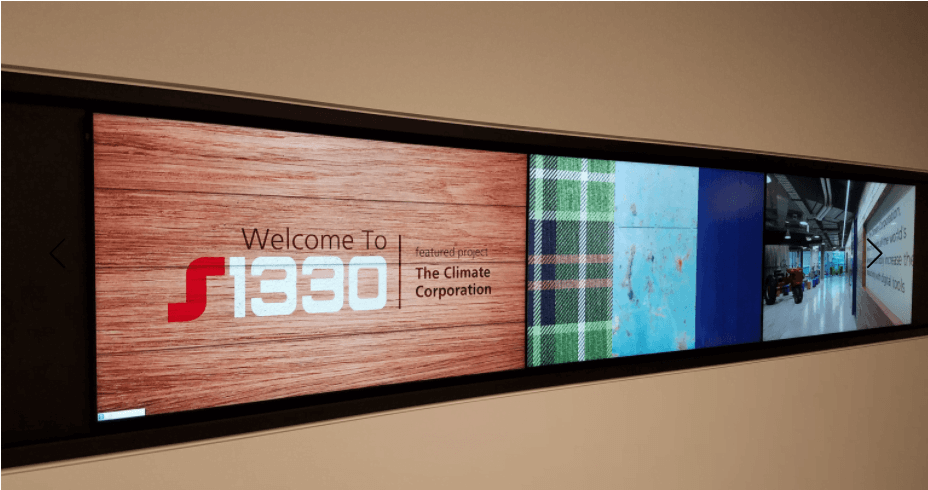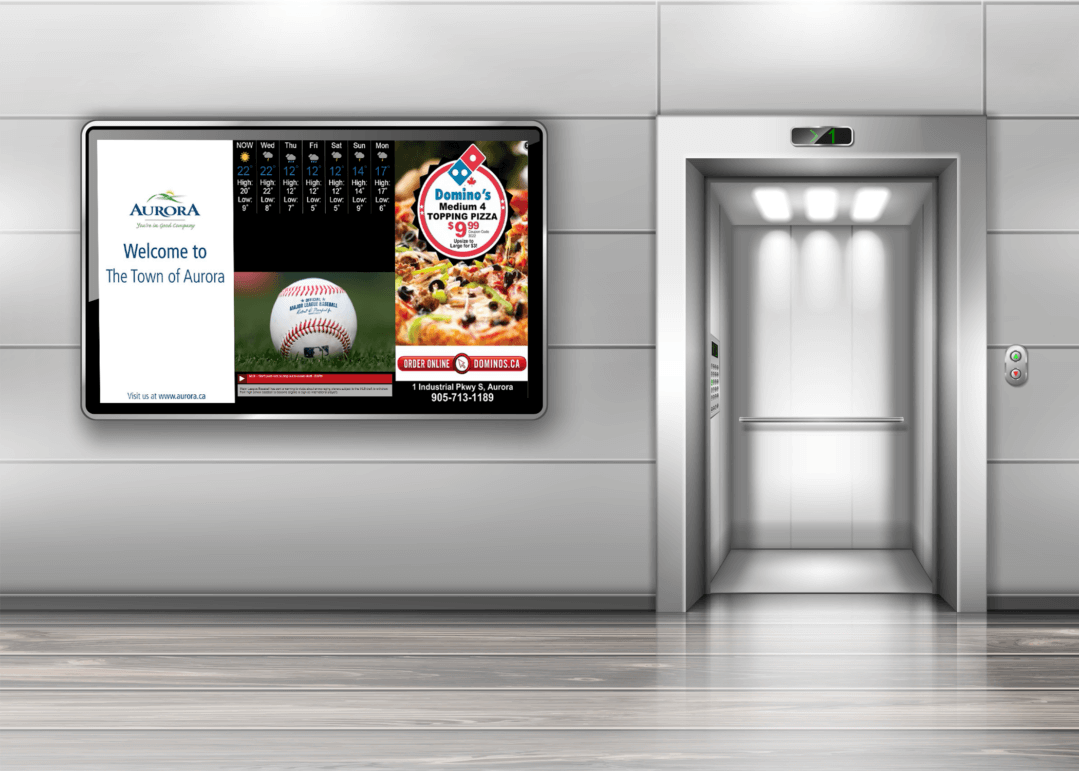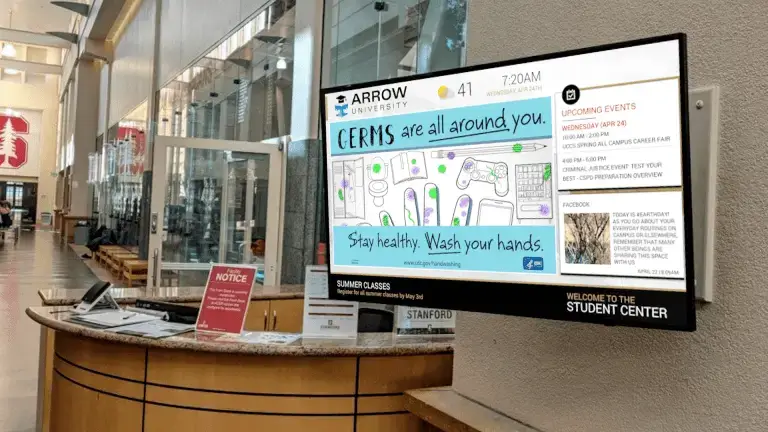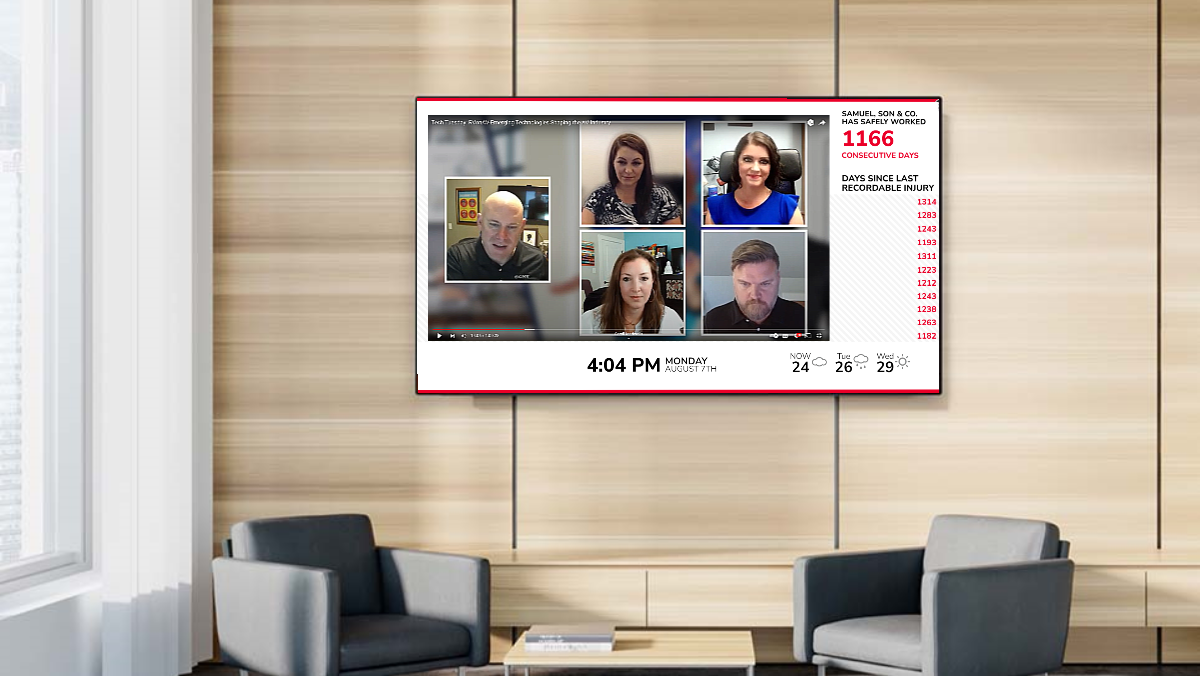If you’re considering integrating digital signage technology into your communication strategy, you’ll need a well-thought-out plan in order to get the most out of your displays. With a proper team and strategy in place, your digital signage displays can provide a massive return-on-investment, open new revenue paths, and expand the impact of your communication. However, strategy involves more than just the content and messaging you plan to publish. A truly effective strategy also considers the location of each display, what hardware will be used, potential integrations you want to leverage, and the people who will manage your digital signage CMS. By fleshing out each of these aspects, you’ll turn your digital signage into a powerful information network that can drive engagement and encourage desired behaviors.
However, the first step to setting up a successful digital signage strategy is finding a software provider you trust. Thankfully, you’re already in the right place. When you partner with REACH Media Network, an install coordinator will walk you through each step of the way, working with you and our design team to create starting layouts, set up integrations, and get the software online. If you need hardware, REACH Media Network also has you covered there. As a BrightSign Bright Alliance partner, we have plenty of powerful BrightSign media players that are some of the most reliable players on the market. We have also recently launched our very own DS3 player, which comes preinstalled with our software at an affordable price. Once your network is set up, an account manager will be assigned to you and will act as your point person for all things REACH related moving forward. You will always have access to our 24/7 support team, as well as free creative design services moving forward. If you’re ready to start your digital signage journey, click the button below to begin talking to an expert!
SEE DIGITAL SIGNAGE IN ACTION
Want to experience the power of digital signage firsthand? Request a free demo today and explore how REACH Media Network can enhance communication and engagement within your organization.
HARDWARE IS YOUR BACKBONE
The hardware you choose to use will act as the backbone of your entire signage network. There are 2 main hardware pieces you need: an HD TV screen and a digital media player. For TVs, OLED, LED, or LCD panels at a size of at least 42” are recommended to make your announcements visible. Placing them slightly above eye level will make them accessible for most audiences. From there, you will need to set up your media player. There are many types to choose from, such as BrightSign, Azulle, ScreenBeam, and more. Some digital signage platforms (such as REACH Media Network) are even considered “hardware agnostic,” meaning you may be able to use hardware you already have on hand, such as Fire TV sticks or webOS smart TVs. However, dedicated media players are generally more reliable and have better functionality.
When deciding what media player is right for you, you must research what each media player you’re considering is capable of and compare that to what you want to achieve through your signage. Not all media players are capable of the same thing or can integrate with certain features, such as Live TV. Understanding what’s available and how to get the most out of your hardware will help inspire content moving forward.
SELECTING YOUR TEAM
Once you have your hardware and software lined up, it’s time to decide who on your team will help manage your signage content. Using the users & roles function within the CMS, you can set permissions for certain users to tailor everyone’s role. For instance, if you have a team of designers, you can limit their access to just the media library and playlist features. Social media managers can have access limited to just social media integrations, allowing them to focus on what’s being posted on behalf of your organization. Of course, each organization will also have an “Admin” who will have access to every app. By selecting the right team for the job and customizing your roles, you will have greater control over your signage management and streamline workflows.
CREATING ENGAGING CONTENT
Now comes the fun part. The principles of creating engaging digital signage content are similar to creating content anywhere else. Essentially, it all boils down to how well you know your audience. By understanding your audience’s needs, you’ll be able to create content that appeals to them and encourages desired actions. However, there are a few guidelines to follow when creating content to make a better impression. Typically, using large, bold fonts will draw attention and allow users to easily read your messaging. If you place your displays in areas that people quickly walk through, you’ll need to quickly make an impression. Contrasting colors also do a great job of drawing eyes to your screen. Adding some dynamic elements, such as animations or videos, will also catch viewers’ eyes and may even keep them glued to the screen for longer. Implementing these tactics while creating content with your audience in mind will lead to engaging marketing materials.
LOCATION IS EVERYTHING
Finally, you must find a location to place your displays in areas where they will have the biggest impact. Hallways, waiting rooms, lobbies, and retail storefronts are some of the most common areas we see displays across multiple industries. Essentially, you want to focus on either high-traffic areas or areas where your audience will be located for extended periods of time. Not only will this expand the reach of your messaging, but it will also give viewers more time to read and engage with your announcements.

CALENDAR/SCHEDULING APPS
Finally, one of the most essential apps we see used in nearly every digital signage solution is some type of calendar integration. From posting employee schedules to event calendars to project deadlines, digital calendars prove essential in making sure an organization is on task. Static, fading, and scrolling effects can be customized to fit your branding standards and add dynamic flair to your display. To inform your team on important events and deadlines, having a digital signage calendar is critical to your platform.
CONCLUSION
With these 5 digital signage application essentials, you can get a fantastic start on your digital signage solution and expand from there. These will act as the building blocks for the rest of your digital signage network. If you’re ready to begin building your network, contact us today!
READY TO START YOUR DIGITAL JOURNEY?
Discover how digital signage can transform your communication strategy. Reach out to REACH Media Network today to learn more about our solutions, explore custom integrations, and see how we can help you connect with your audience in meaningful ways.


